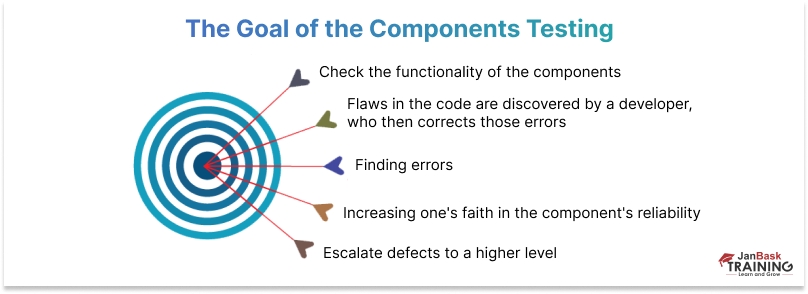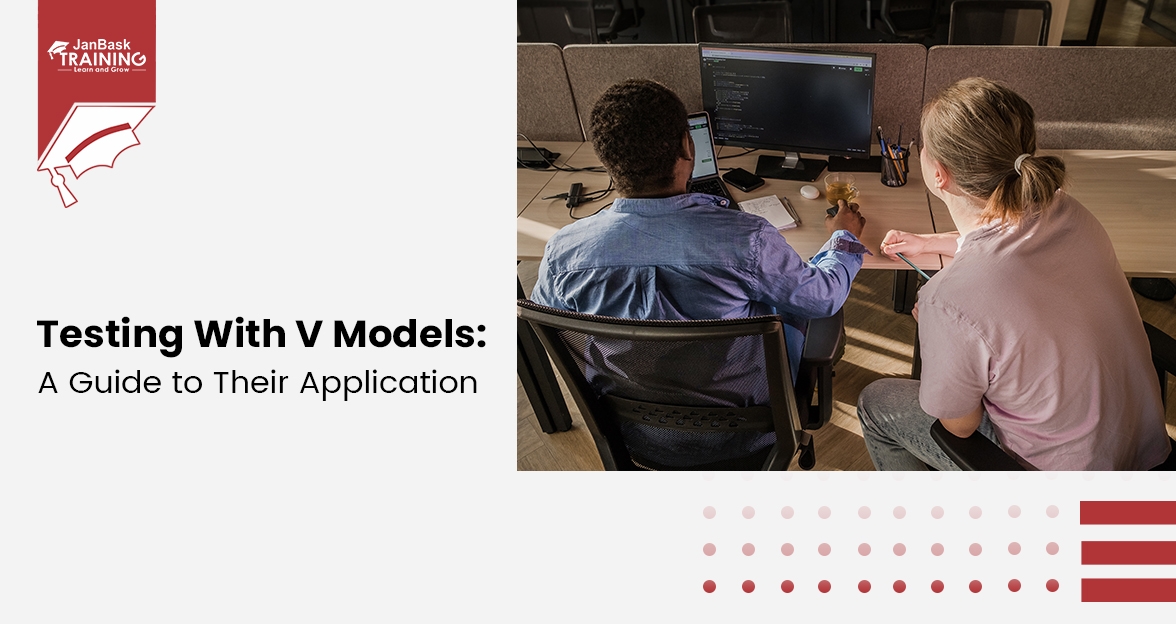Grab Deal : Flat 30% off on live classes + 2 free self-paced courses - SCHEDULE CALL
QA, i.e., Quality assurance testing, ensures that your product is of top-notch quality for your clients; in other words, it's simply used to avoid issues with your software product or service and provide excellent UX for your clients. Online QA training will give you the necessary skills to become an expert.The basic idea of an application can be described as the collection of a significant number of discrete, smaller modules. Because a component is the smallest unit that makes up an application, it is essential to do complete or brute-force testing before testing the system as a whole. This is the only way to ensure the system will pass every test. Therefore, the purpose of component testing is, as its name suggests, to test the most fundamental or fundamentally essential pieces of an application.
Components are typically separate parts of an application that can be combined with other components to create the entire application.White box testing is one kind of testing known as component testing. In component testing, an individual component of an application is validated before the application as a whole is tested.
As a direct result, component testing identifies defects and validates the functionality of software modules and programs that may be tested individually. Testing of components is sometimes referred to as testing programs or modules. Testing the software's functionality and the identification of flaws in the modules of the software are both outcomes of this process.The ISTQB defines component testing as testing each piece of hardware or software in isolation and effectively for a specific application. For example, when an application contains five different components, then Component testing performs some tests on each component individually in isolation.

Who is Responsible for Testing Components?
Testers are responsible for carrying out component testing. The process in which testing individual features, functions, and procedures is called "unit testing," and software developers perform it. Component testing is the next step in the testing process once unit testing has been completed. The testing of the components is performed and carried out by the testers.A comprehensive QA software tester career path will be helpful for QA engineers’ professional development and career prospects.
The Component Testing phase begins immediately after the developers have completed the Unit Testing and the build has been made available to the testing team. The UT build is the name given to this version (Unit Testing Build). During this phase, the primary functionality of each of the components is examined and tested.
The requirements for participation in the component testing:-
Exit criterion for the testing of components:-
Component Testing Methods
Component testing can be broken down into the following categories according to the amount of scrutiny it receives at each level:
1. CTIS – Component Testing in Small:
A component can be tested with or without isolating the remaining components of the software or application being evaluated. Component Testing in Small is the name given to the process when it is executed in an environment where no other components are present.The automation testing course will help you build a strong foundation and get hands-on experience in the testing field.
2. CTIL – Component Testing In Large:
Component testing done without isolation of other components in the software or application under test is called Component Testing Large.
Let’s take an example to understand it in a better way. Suppose an application consists of components: Component X, Y, and Z. The developer has developed Component Y and wants it tested. But to thoroughly test Component Y, few of its functionalities depend on Component X and Component Z.

According to the diagram, the functionality flow goes as follows: X > Y > Z, which depicts a dependency on Y from both X and Z. The stub is the function that is being called, and the driver is the function that is making the call.
However, neither the X nor the Z component has been developed as of yet. In that instance, we can replace components A and Z with a stub and drivers as appropriate to do a comprehensive test on component Y. To put it simply, components X and Z are swapped out for stubs and drivers, which serve in the capacity of dummy objects till the real thing is constructed.
Temp1: As depicted in the following diagram, a temp1 is called from the software component being tested. Component X makes a call to the function known as "temp1."
Temp2: A temp2 will call the component that will be tested, as demonstrated in the figure below. In this case, temp2 will be called "Component Z."
Automation testing is an ever-growing field; refer to this step-by-step guide, which will walk you through how to become an automation testing expert.
The Goal of the Components Testing

The following is a list of the goals of the component testing:
QA engineers spend more time in the testing, and if you like testing and preparing for testing interviews, here are the top 122+ QA testing interview questions and answers.
Component Testing in Small (CTIS) and Component Testing in Large (CTIL) are the two portions of component testing that are divided depending on the testing level being performed. Testing a component in tiny amounts involves testing the component in isolation from any other components. Integration of this does not need the use of any other components. On the other hand, testing the component on its completion is executed when there is a dependency on other components, and we cannot isolate the two reliant components.During the large-scale testing of the components, it was discovered that the two cannot be isolated since they are interdependent, and neither has been fully completed.
This dependency can be replaced with the help of a stub and driver.
In computer programming, "Stubs" are short sections of code that take inputs and provide responses to the top module. The component that has to be tested will call on a stub to perform its functionality. A driver initiates communication with the component that is to be tested. In the event that the lowest module does not have a calling function, drivers that serve as a dummy program are utilized to call the functions of the higher modules.
When testing is done on components, individual components or units are examined and evaluated. During component testing, particular properties of system components, such as their functionality and non-functional attributes, may be validated. Examples of these qualities include:
The Rationale for Why Component Testing is Carried Out:This is because severe flaws are less likely to arise in subsequent phases if a component is subjected to exhaustive testing earlier in the process. There is a gap in test coverage since the modern apps we create are highly complex and challenging to test. As a consequence, we need complete test coverage. Because the software comprises several separate components and modules, component testing must be accomplished before proceeding to more sophisticated testing phases.
These units are more straightforward to diagnose and need less time than other systems. Despite this, there are times when the outputs of one device can be used as the inputs of another. As a result, if one unit produces an inaccurate output and another uses that output later, the second unit will likewise produce a false output.Any subsequent integration of components into the system may have unanticipated outcomes if the initial unit is not first subjected to independent component testing before integration. As a result, all software units need to undergo separate testing using component testing to circumvent this problem.
Automation with Selenium is an even better option since the IT industry is fast evolving; here are the Selenium tester roles and responsibilities for your knowledge.
Methods for Performing Component Testing: When putting together a test plan for a component, there are a few basics you should always keep in mind. Component testing can be done using either the White box or Black box techniques by developers or quality assurance engineers. Since testing occurs for components as soon as they are formed, there is a chance that findings returned from a component under test rely on other components that have not yet been created. A Stub and Driver pair can perfectly mimic the interaction of the missing software components.
Comparison Between Component Testing and Unit Testing:
Are you curious to know which tool is the best for QA testers? Here is the list of the best software testing tools to invest in.
QA Training For Administrators & Developers

When looking for flaws, testing components is essential. First, we must always perform component testing to guarantee that each module operates as expected before moving on to integration testing. I hope you now have a firm grasp of the significance of component testing in ensuring product quality. Component testing provides the highest possible quality in the final product by involving all stakeholders in the testing process, not just the testing team.

Testing with V Models: A Guide to Their Application


Understanding The Software Development Life Cycle (SDLC) in QA

Cyber Security

QA

Salesforce

Business Analyst

MS SQL Server

Data Science

DevOps

Hadoop

Python

Artificial Intelligence

Machine Learning

Tableau
Download Syllabus
Get Complete Course Syllabus
Enroll For Demo Class
It will take less than a minute
Tutorials
Interviews
You must be logged in to post a comment